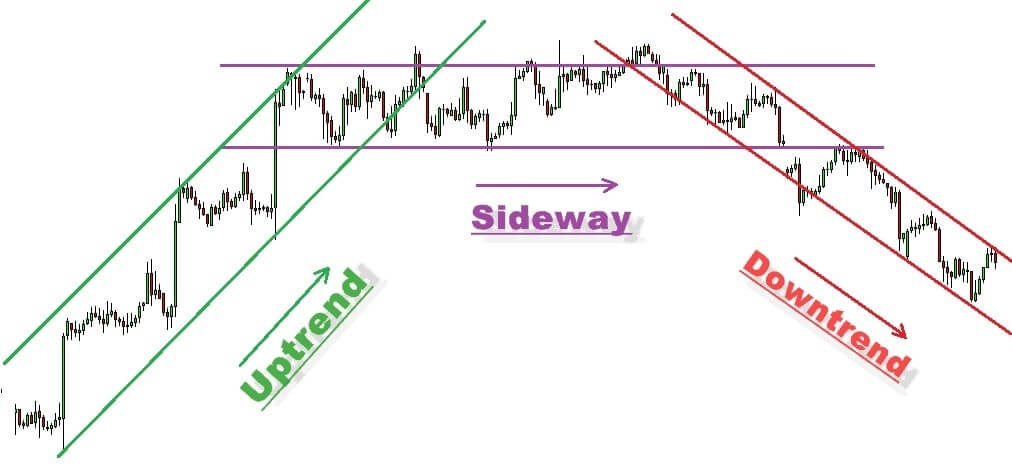You’ve probably been doing your fair share of research on “What's best options trading strategy” on Google, YouTube, Investopedia, etc. And it’s almost certain that every time you conduct this search, you come across a new answer. What if we gave you a different answer — one that you probably won’t be super thrilled to hear. The answer is: It depends.
Yes, there is truly no singular options strategy that remains superior across all market types and market conditions. The beauty and curse of the stock market is that conditions can change drastically overnight, forcing traders to pivot quickly. The strategies that work best during long, elevated bull runs likely will not work during large declines. Similarly, the strategies leveraged during sideways markets will likely not work as well as those during strong rallies. The reason for this is because different market types will harbor radically different conditions, which are never conducive to one singular strategy.
Let’s break this down by digging into three different market types.
Uptrends
The first type of market is the one that everybody loves: strong bull markets. Oftentimes this market is created on the backs of a generous FED policy, where money is printed and poured into the market, giving us all confidence as buyers to go as deep as we can into equities. How do we classify markets that are in uptrends? We define uptrends as periods when the market is consistently sitting above all of its major moving averages (which are all rising), hitting new highs week after week, with minimally aggressive pullbacks. The reason why everybody loves this particular market is because it’s easiest for everybody to make money with virtually any bullish strategy. You can buy calls, sell puts, sell put credit spreads, or run any other bullish strategy that bets on either appreciation or lack of depreciation.
In this type of market, it’s very common to see strong leaders breaking out with high volume and forming fresh new highs, while institutions are aggressively buying whatever they can. Mid 2020 to early 2021 are great examples of this. Again, in this market, you can easily run multiple bullish strategies and come out profitable with virtually all of them. The best options trading strategy for us is a combination of buying calls on breakouts and otherwise selling puts on pullbacks for other names. As long as these work, there is no reason to pivot or move to anything else. But there will come a time when the broader market changes drastically, which will lead into our next market type.
Downtrends
Before you know it, the market sentiment shifts drastically and starts to decline rapidly day after day. We define downtrends as periods where the market’s price is sitting below its decreasing 200D moving average. Until then, it’s easy to mistake a minor pullback as “the market is crashing” while in reality, it’s actually a phenomenal opportunity to sell puts because the pullback will likely be short lived and find support before turning back around. When it comes to shifting market conditions, we prefer to be extra conservative so we don’t preemptively shift gears too early. The market tends to be stubborn and take a long time before it officially pivots from an uptrend to a downtrend. But when it happen, stocks start to behave very differently across the board. Breakouts will fail for even strong names, puts will get bid up due to a surge in volatility, and various strong names will start dropping like flies.
So when the market is officially in a downtrend, what are the best options trading strategies? This is a bit trickier, because downtrends are often met with highly unpredictable and volatile conditions. However, it’s clear that we can no longer buy calls due to the lack of breakouts present, nor can we sell puts because the risk of assignment and getting challenged increases significantly. In general, our trading style instantly shifts to smaller scale, more conservative trading with the appropriate risk mitigation. This will involve a combination of selling call credit spreads when the market goes up significantly, and put credit spreads when the market goes down significantly. Additionally, we’ll selectively buy puts on weaker names that appear to be on the verge of a breakdown. However, we prefer to scale back our trading activity because we know that our best performance comes when the market is a bit more predictable. Downtrends don’t last forever, they’ll usually last anywhere from a few weeks to several months (or in some cases, years if there’s a broader economic crisis), and they’re usually followed by periods of sustained consolidation. This leads into our last market type.
Sideways
Sideways markets can be a bit frustrating, because they’re usually intermediary stages where the market remains directionless but is gearing up for a big move. We classify markets as sideways when it’s been range-bound for at least a month or more. It will usually develop a relatively tight range that the market will trade between for several weeks to months at a time. There tend to be a great deal of fake outs that take place in this market, because traders often anticipate trends to begin. In terms of making money, as long as you recognize that the market is trading sideways, it’s quite simple to take advantage of. During these periods, market volatility also tends to remain low.
Ultimately, our method of choice for remaining profitable and protected simultaneously is to sell put credit spreads when the market enters the low end of its recent trading range, and call credit spreads if it enters the high end of its recent range. And if there’s ever a breakout or breakdown formed outside of the range, that’s your signal to mitigate risk with minimal losses. The amount of money to be made in these markets is not necessarily substantial, but these are second to uptrends as periods to be aggressive in to try to grow your account. During these markets, you should not expect strong all time high breakouts form, but also shouldn’t expect any aggressive selling. This is why buying puts or calls outright become unprofitable strategies during these time periods.
Conclusion
Ultimately, what makes trading so difficult is that you can’t run the same strategies over and over again and expect the same result. In the three market types we’ve just discussed, there’s a time and a place for all strategies out there. Of course, during rapidly changing markets, you don’t have to just pivot overnight and eliminate the previous strategies you’ve been deploying successfully. Instead, we prefer running a staged transition. If the market looks like it’s stagnating after an uptrend, then then we’ll reduce our allocation towards long calls and focus more collecting premium as it becomes rangebound. Or if the market pivots from sideways to a downtrend, then we’ll start to increase our exposure to long puts on suspected breakdowns and start to slow our trading activity as a whole.
Of course, this shouldn’t be taken as a detailed playbook of any sort, because we don’t fully discuss the details of identifying each market type and how or when we run a particular strategy. But, if nothing else, this should inspire you to think a bit differently than the masses and aim to improve your trading. If you’d like to trade along with us in our community, feel free to give either our course or alerts a try.




